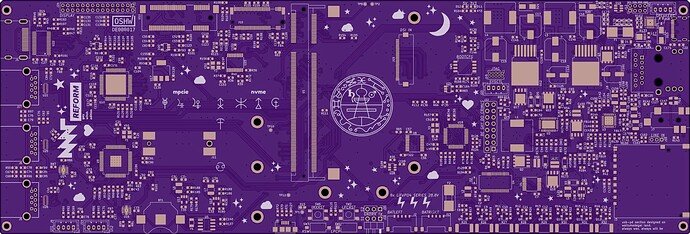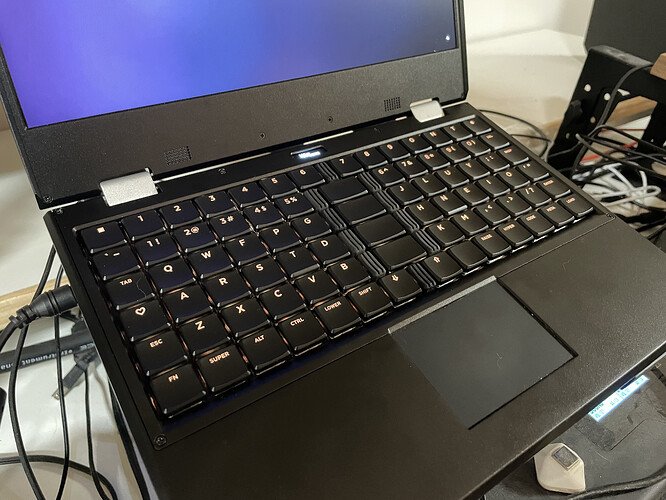Open Source Hardware Explained
As stated in our principles, we are committed to open hardware and are actively working to spread the idea so it becomes as well-known a term as open source.
Even if you don't work in tech or are not deep into computer stuff, you've probably encountered the term open source and you probably also know what it means. (It means that the software code is publicly accessible and can be modified and distributed.)
However, the term open hardware (or open source hardware, an interchangeable term) has not yet made it into the mainstream. So why is that? The answer is relatively obvious: The vast majority of products are not open hardware, but proprietary and patented—the opposite of open.
The term open source hardware was coined in 1997 by Bruce Perens (creator of the Open Source Definition and co-founder of the Open Source Initiative) and the Debian developers as the Debian Free Software Guidelines, and the definition, as stated by the Open Source Hardware Association reads: "Open source hardware is hardware whose design is made publicly available so that anyone can study, modify, distribute, make, and sell the design or hardware based on that design. […] Open source hardware gives people the freedom to control their technology while sharing knowledge and encouraging commerce through the open exchange of designs." We fully agree with this notion of how hardware should be conceptualized, designed and shared.
When all the design files, source code, and schematics are publicly available, modifiable and reproducible, there is plenty of room for improvement and individuality. We believe that public availability is beneficial to everyone, so we publish our source code and share all our design files on GitLab.
Examples of Modifications
Anyone with an internet connection and a digital device can access our documents, and we encourage our users to make improvements to our products or to even construct their own devices, building on our work, using the documents we provide. We love our very active MNT Community who has made various, significant contributions to the classic MNT Reform. Here some examples to give you an idea of the power of open hardware:
- Clean Debian integration
- Genode Sculpt OS Port
- 9front Port
- OpenBSD Port
- Sleep/power saving for keyboard MCU and LPC
- Trackball improvement with bearings
- LPC SPI / Battery status kernel module
- Open Source Hardware USB Camera
- MNT Reform iFixit Guides
We also keep in touch with the developers of the etnaviv GPU and hantro VPU drivers and are thankful for their continuous improvements, bugfixes and enabling hardware h.264 and h.265 decoding.
An amazing project we are always excited to get updates on is Jacqueline’s own Reform. This is a rendering of her ("gay") PCB:
Jacqueline also custom-designed her own Reform keyboard.
The astonishing ortholinear keyboard kit by Jack Humbert was published at the beginning of 2023 and we are extremely excited about this new custom Reform keyboard.
By providing all the information needed to develop and improve our devices, we ensure that the products we created live on, even if MNT Research should no longer exist. MNT is meant to be a platform for others to participate, communicate and work together. We are already looking forward to seeing what the community will come up with in the future.
Building a Community
As shown in the previous paragraph, open source hardware brings like-minded people together and actually helps the user—and the product.
By collaborating with each other, improving devices by debugging, making products their own by modifying and customizing them, might be the strongest argument to support open source hardware. This way, we work efficiently and avoid waste. Waste in terms of materials, but also time, energy and resources, which is common for proprietary technologies. Companies don’t want to build on other companies’s work—they only create to patent their designs/IPs instead of collaborating with other players in the industry which could result in new, improved standards. MNT Research wants to help build new open standards and joined the newly founded Open Hardware Allianz. This organization is a network of open hardware experts, institutional representatives and policy-makers who support the funding and promotion of open hardware projects.
With the establishment of institutions like the Open Hardware Allianz, we see a very positive, forward-looking development in the open hardware community and are more than eager to contribute and to move ideas forward.
Right to Repair
As it is important to us to make our products reproducible, even in small numbers and decentralized, we develop and manufacture our products in a way that is sustainable and durable. This means, we use materials that are recyclable (like aluminum) as best as we can, which has the positive side effect of making our devices robust against various external forces. For 3D printing, we use the highly economic additive method and reusable PLA materials to reduce waste. Waste is a huge factor in hardware production, environmentally as well as economically. We don’t want to produce waste, we want exactly the opposite: create devices that can be used for a long time and that can be recycled once they are broken beyond repair.
Talking of repair: We design our PCBs (Printed Circuit Boards) in a way that makes them repairable manually by the user or a person who has knowledge or skills in the area of consumer electronics. If a part or component breaks, you can (mostly) easily replace it as we try to use standard components whenever possible. If it’s a major part, we offer replacements and repair your device (within the warranty period).
How to Participate
It might be intimidating at first to start participating, communicating with people you don’t know, or using a new tool, but our MNT community is always willing to help you along the way, so we encourage you to reach out to them and to us anytime.
If you modify a device that is based on our work, please use the Reform Remix logo.
Ways to Get in Touch
- MNT Community
- IRC channel #mnt-reform on irc.libera.chat
- Mastodon/Fediverse
- Bluesky

